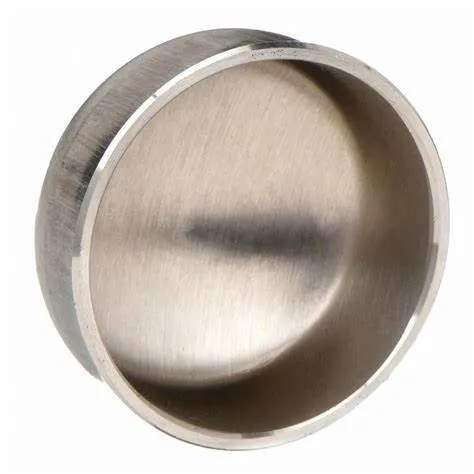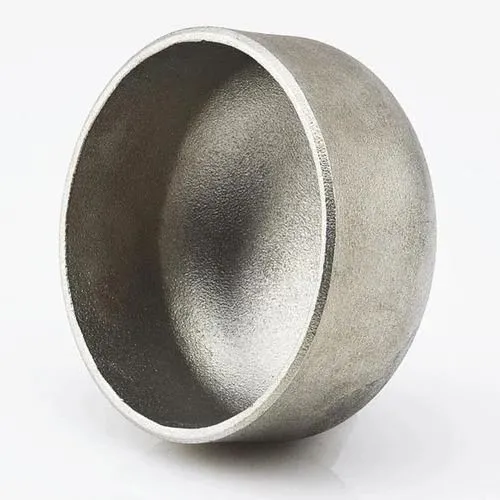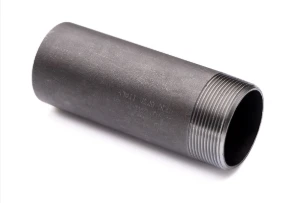JIS B2311 is 'n Japannese industriële standaard wat stompsweispyptoebehore dek, insluitend doppe wat in pypstelsels gebruik word. Stompsweisdoppies dien die doel om die einde van 'n pyp toe te maak, wat 'n seël verskaf om lekkasie of besoedeling te voorkom. Hier is 'n inleiding tot JIS B2311 stompsweisdoppies:
- 1. JIS B2311 Standard:
- - JIS B2311-standaard spesifiseer die vereistes vir die ontwerp, afmetings, materiale, vervaardiging en toetsing van stuiksweistoebehore, insluitend doppe, in pypstelsels.
- - Die standaard verseker dat doppe vervaardig in ooreenstemming met JIS-standaarde voldoen aan kwaliteitstandaarde en versoenbaar is met ander pypkomponente.
- 2. Boud-sweisdop:
- - 'n Stiksweisdop, volgens JIS B2311, is 'n passtuk wat ontwerp is om die einde van 'n pyp veilig te bedek en te verseël, wat beskerming bied en die integriteit van die pypstelsel behou.
- - Doppies word gebruik in situasies waar die pyppunt sluiting vereis, hetsy permanent of tydelik, om lekkasie, kontaminasie te voorkom of om 'n afwerking aan die stelsel te verskaf.
- 3. Materiaal en konstruksie:
- - Stuksweisdoppies onder JIS B2311-spesifikasies is beskikbaar in verskeie materiale soos koolstofstaal, vlekvrye staal en legeringstaal om aan verskillende toepassingsvereistes te voldoen.
- - Hierdie doppe word vervaardig met gestandaardiseerde konstruksiemetodes om 'n sterk en lekvrye verbinding te verseker wanneer dit aan die punt van 'n pyp gesweis word.
- 4. Aansoek en voordele:
- - Stompsweisdoppies vind toepassings in verskeie industrieë, insluitend olie en gas, chemiese prosesse, waterbehandelingsaanlegte, en meer waar pyppunte veilig toegedraai moet word.
- - Doppies bied beskerming aan pyppunte teen omgewingselemente, voorkom kontaminasie en help om die netheid en integriteit van die pypstelsel te handhaaf.
- 5. Installasie en sweiswerk:
- - Behoorlike installasiepraktyke, insluitend korrekte belyning, voorbereiding van die pyppunt, en sweistegnieke, is noodsaaklik wanneer stompsweisdoppies geïnstalleer word om 'n digte en lekvaste seël te verseker.
- - Sweiswerk is 'n algemene metode om doppe aan pype vas te maak, wat 'n veilige en permanente sluiting bied wat druk, temperatuurvariasies en vloeistofvloei binne die stelsel kan weerstaan.
- Samevattend, JIS B2311-stompsweisdoppies is deurslaggewende komponente wat in pypstelsels gebruik word om die einde van pype veilig te seël en te beskerm. Hierdie doppe voldoen aan gestandaardiseerde vereistes om kwaliteit, betroubaarheid en verenigbaarheid binne industriële toepassings te verseker waar pypsluiting en beskerming nodig is.
What Is a Butt Welding Cap and How Is It Used in Industrial Piping?
In industrial piping systems, end-of-line sealing and branch closures require robust solutions. A butt welding cap serves as a critical component for terminating pipes securely. By providing a seamless, welded closure, this fitting maintains system integrity, prevents leaks, and supports compliance with industry standards.
What Is a Butt Welding Cap?
A butt welding cap—also called a pipe end cap or buttweld end cap—is a round fitting designed to close off the end of a pipe. It’s manufactured to match the pipe’s outer diameter and schedule, with either a hemispherical or flat face. To install, both the pipe end and cap are beveled to form a V‑groove, enabling full‑penetration, fusion welds. Common materials include carbon steel, stainless steel, nickel alloys, and other engineered grades, chosen to satisfy pressure, temperature, and corrosion‑resistance requirements.
How Is Butt Welding Cap Used in Industrial Piping?
Butt welding caps find application across oil & gas, petrochemical, power generation, water treatment, and general process industries for both permanent and temporary closures. During hydrostatic testing, technicians install caps to seal off sections of piping while monitoring for leaks. In new construction or retrofit projects, caps terminate branch lines, future tie‑in spools, or dead‑end mains until system expansion. Welders prepare each joint by cleaning and beveling surfaces, aligning the cap precisely, and executing a root pass followed by filler passes per the qualified Welding Procedure Specification (WPS). Post‑weld heat treatment and non‑destructive examination (NDE)—such as radiography or ultrasonic testing—verify weld integrity and compliance with ASME B16.9 and related standards. Additionally, temporary caps enable safe isolation during maintenance, allowing for segment testing and dewatering under regulatory protocols.
Benefits and Best Practices
Butt welding caps offer a smooth‑bore transition that minimizes flow disruption and stress concentration. Their full‑penetration welds deliver exceptional structural strength and leak resistance. To optimize performance, engineers should:
Select caps with matching material grades and wall thicknesses
Adhere to proper bevel angles and joint fit‑up tolerances
Follow qualified WPS protocols rigorously
Consider cladding or protective coatings in corrosive environments to extend service life
Regular inspection and thorough documentation ensure long‑term reliability and safe operation under demanding conditions.
Butt welding caps are indispensable components for achieving durable, leak‑proof pipe terminations in a wide range of industrial applications.
Butt Welding Cap FAQs
What is a butt welding cap?
|
What materials are commonly used?
|
What standards govern butt welding caps?
|
How are butt welding caps installed?
|
Where are butt welding caps typically used?
|
What are the advantages of threaded caps?
|
















